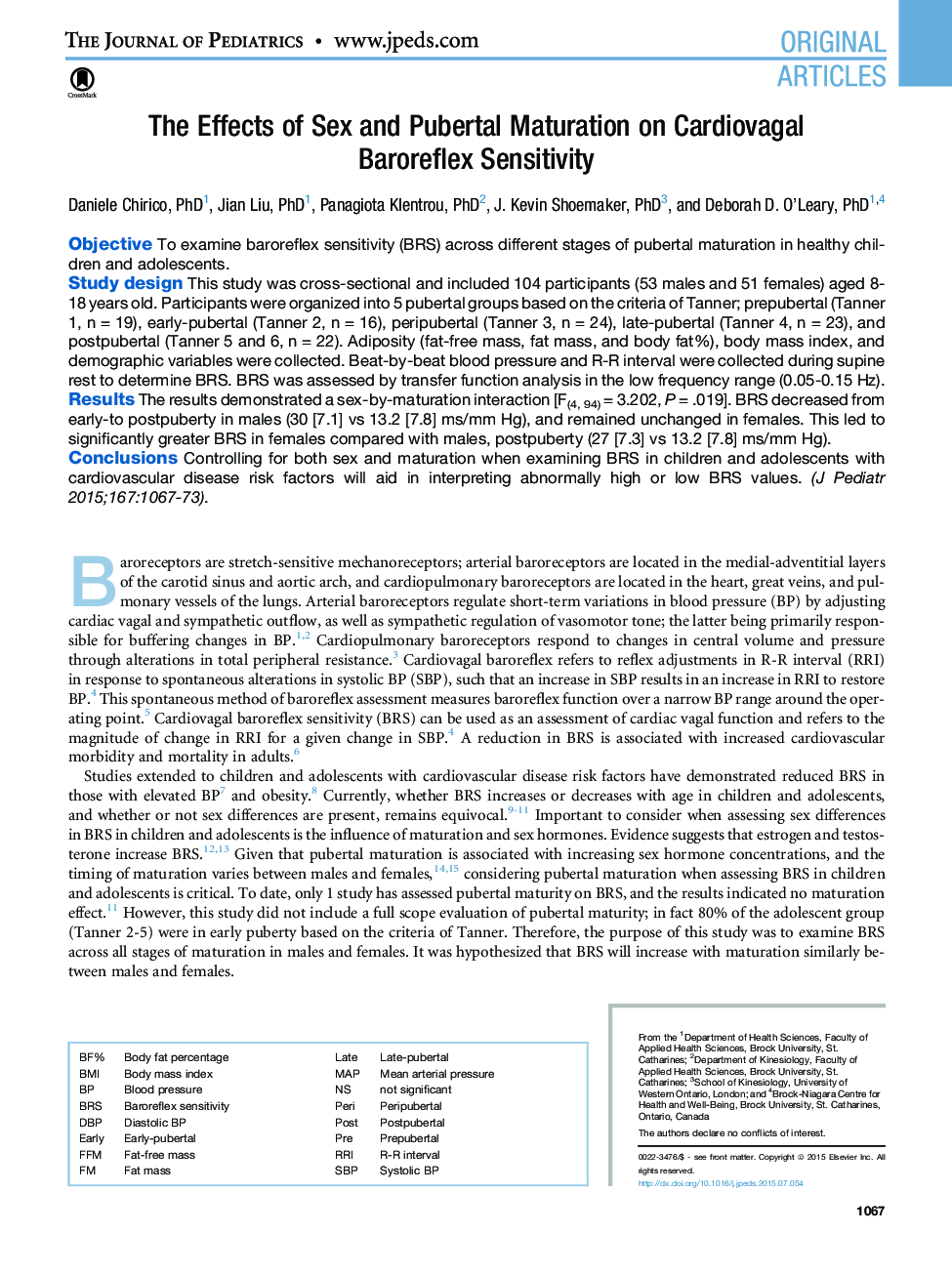| Article ID | Journal | Published Year | Pages | File Type |
|---|---|---|---|---|
| 4164725 | The Journal of Pediatrics | 2015 | 7 Pages |
ObjectiveTo examine baroreflex sensitivity (BRS) across different stages of pubertal maturation in healthy children and adolescents.Study designThis study was cross-sectional and included 104 participants (53 males and 51 females) aged 8-18 years old. Participants were organized into 5 pubertal groups based on the criteria of Tanner; prepubertal (Tanner 1, n = 19), early-pubertal (Tanner 2, n = 16), peripubertal (Tanner 3, n = 24), late-pubertal (Tanner 4, n = 23), and postpubertal (Tanner 5 and 6, n = 22). Adiposity (fat-free mass, fat mass, and body fat%), body mass index, and demographic variables were collected. Beat-by-beat blood pressure and R-R interval were collected during supine rest to determine BRS. BRS was assessed by transfer function analysis in the low frequency range (0.05-0.15 Hz).ResultsThe results demonstrated a sex-by-maturation interaction [F(4, 94) = 3.202, P = .019]. BRS decreased from early-to postpuberty in males (30 [7.1] vs 13.2 [7.8] ms/mm Hg), and remained unchanged in females. This led to significantly greater BRS in females compared with males, postpuberty (27 [7.3] vs 13.2 [7.8] ms/mm Hg).ConclusionsControlling for both sex and maturation when examining BRS in children and adolescents with cardiovascular disease risk factors will aid in interpreting abnormally high or low BRS values.
